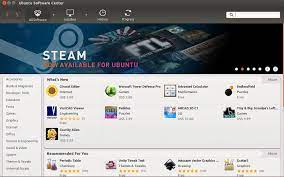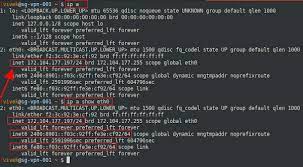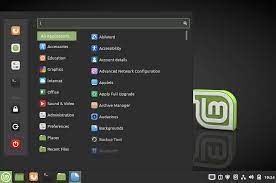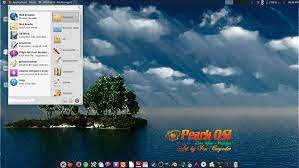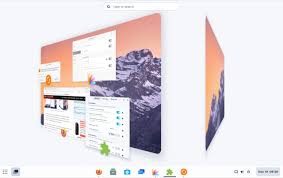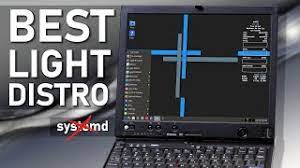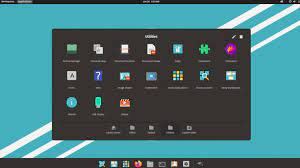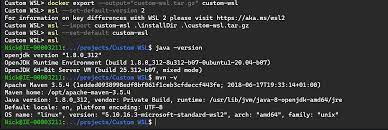Effortless Software Installation on Linux: A User-Friendly Guide
Installing Software on Linux
Linux offers a variety of methods to install software, making it a versatile and user-friendly operating system for users of all levels. Whether you are a beginner or an experienced user, installing software on Linux is a straightforward process that can be done through package managers, repositories, or manually.
Package Managers
One of the most common ways to install software on Linux is through package managers. Package managers such as apt (used in Debian-based distributions), yum (used in Red Hat-based distributions), and pacman (used in Arch Linux) allow users to easily search for, install, update, and remove software packages from official repositories.
Using Repositories
Linux distributions maintain repositories that contain a vast collection of software packages. By configuring your system to access these repositories, you can quickly install software with just a few commands. Repositories ensure that the software you install is up-to-date and compatible with your system.
Manual Installation
In some cases, you may need to install software manually on Linux. This involves downloading the software package from the developer’s website, extracting the files, and following installation instructions provided by the developer. While manual installation gives you more control over the process, it may require additional dependencies to be installed.
Conclusion
Installing software on Linux is a seamless process thanks to package managers, repositories, and manual installation methods. Whether you prefer the convenience of package managers or the flexibility of manual installation, Linux provides options for every user’s needs. Explore the diverse range of software available for Linux and enhance your computing experience with ease.
Seven Advantages of Linux Software Installation: Streamlined Management, Extensive Repositories, and Enhanced Security
- 1. Efficient package managers streamline the installation process.
- 2. Access to vast repositories with a wide range of software options.
- 3. Quick and easy updates for installed software packages.
- 4. Dependency management ensures smooth installation of required components.
- 5. Increased security through verified software sources in official repositories.
- 6. Customisable installation options for users with specific preferences or requirements.
- 7. Simplified removal of software packages when no longer needed.
Six Challenges of Installing Software on Linux: From Learning Curves to Fragmentation Concerns
- Learning curve
- Dependency issues
- Limited software availability
- Compatibility concerns
- Security risks
- Fragmentation
1. Efficient package managers streamline the installation process.
One of the key advantages of installing software on Linux is the efficiency offered by package managers. These tools streamline the installation process by providing a centralized platform to search for, install, update, and remove software packages seamlessly. With package managers like apt, yum, and pacman, users can quickly access a vast repository of software, ensuring that installations are smooth and hassle-free. This efficient system not only saves time but also helps maintain system stability by handling dependencies and updates effectively.
2. Access to vast repositories with a wide range of software options.
One of the standout advantages of installing software on Linux is the access to vast repositories that offer a wide range of software options. Linux distributions maintain extensive repositories containing a diverse selection of software packages, ensuring users have access to an array of tools, applications, and utilities to cater to their specific needs. This abundance of software options available through repositories not only simplifies the installation process but also guarantees that users can easily discover and install the latest and most up-to-date software for their Linux systems.
3. Quick and easy updates for installed software packages.
One of the key advantages of installing software on Linux is the quick and easy updates for installed software packages. Linux package managers, such as apt and yum, streamline the process of updating software by automatically checking for new versions and providing simple commands to update installed packages. This ensures that users can easily keep their software up-to-date with the latest features, bug fixes, and security patches without having to manually search for updates or navigate complex update procedures. The efficient update mechanism in Linux makes it convenient for users to maintain a secure and optimally functioning system with minimal effort.
4. Dependency management ensures smooth installation of required components.
One of the key advantages of installing software on Linux is its robust dependency management system, which ensures a smooth installation process by handling the required components seamlessly. Linux package managers automatically identify and install any dependencies needed for a particular software package, eliminating the need for users to manually track and install additional libraries or modules. This streamlined approach not only simplifies the installation process but also helps maintain system stability and compatibility, making software installation on Linux efficient and hassle-free.
5. Increased security through verified software sources in official repositories.
One significant advantage of installing software on Linux is the increased security provided by verified software sources in official repositories. By accessing software from trusted repositories, users can be confident that the software has undergone thorough scrutiny for security vulnerabilities and authenticity. This reduces the risk of downloading malicious or compromised software, enhancing the overall security of the system. Additionally, regular updates and monitoring of these repositories ensure that users have access to safe and reliable software options, contributing to a more secure computing environment on Linux systems.
6. Customisable installation options for users with specific preferences or requirements.
Linux offers customisable installation options for users with specific preferences or requirements, making it a highly flexible operating system. Whether users need to fine-tune their software installations for performance, security, or specific functionalities, Linux provides the tools and freedom to tailor the installation process to meet individual needs. This level of customisation empowers users to create a computing environment that aligns perfectly with their unique preferences and requirements, setting Linux apart as a versatile platform that caters to a diverse range of user needs.
7. Simplified removal of software packages when no longer needed.
One of the key advantages of installing software on Linux is the simplified removal of software packages when they are no longer needed. Linux makes it easy for users to uninstall applications through its package managers, allowing for a hassle-free process of cleaning up the system and reclaiming disk space. By providing a straightforward method to remove software packages, Linux ensures that users can efficiently manage their installed programs and maintain a clutter-free system environment. This feature not only enhances system performance but also promotes a more organised and streamlined user experience on the Linux platform.
Learning curve
For beginners transitioning from other operating systems, one notable con of installing software on Linux is the steeper learning curve associated with Linux package managers and installation methods. Unlike more user-friendly graphical interfaces found in some other operating systems, Linux package managers often require users to interact with the command line and understand specific commands for searching, installing, and managing software packages. This adjustment may pose a challenge for newcomers unfamiliar with this approach, potentially leading to a slower adoption process as they navigate the intricacies of Linux software installation methods.
Dependency issues
One significant drawback of installing software on Linux is the occurrence of dependency issues. When installing certain applications, users may encounter the need to resolve dependencies manually. This process can be time-consuming and complex, especially for those who are not familiar with the intricacies of software dependencies. Having to track down and install all the necessary dependencies can pose a challenge and may deter some users from exploring new software options on Linux.
Limited software availability
A notable drawback of installing software on Linux is the limited availability of certain proprietary applications. Due to compatibility issues and licensing restrictions, some popular software may not have official versions that are compatible with Linux operating systems. This limitation can restrict users who rely on specific proprietary tools or applications, potentially forcing them to seek alternative solutions or use emulation software to run these applications on Linux. The restricted availability of proprietary software on Linux can be a challenge for users who require access to specific programs that are not natively supported on the platform.
Compatibility concerns
Compatibility concerns are a notable con when it comes to installing software on Linux. Due to the diverse nature of Linux distributions and the variations in package management systems, software packages tailored for specific distributions or versions may encounter compatibility issues when used on different platforms. This can result in suboptimal performance, functionality limitations, or even complete failure of the software to run as intended. Users may need to navigate through compatibility challenges and possibly seek alternative solutions to ensure smooth installation and operation of software across different Linux distributions.
Security risks
One significant con of installing software on Linux is the potential security risks associated with sourcing applications from unofficial repositories or sources. Failing to thoroughly vet software before installation can leave your system vulnerable to security breaches and malware threats. It is crucial to exercise caution and ensure that software is obtained from trusted and verified sources to mitigate the risk of compromising the security of your Linux system.
Fragmentation
Fragmentation in the Linux ecosystem poses a significant challenge when it comes to installing software. With a wide array of Linux distributions and package management systems available, compatibility issues and varying software availability can arise, leading to fragmentation. Users may encounter difficulties in finding and installing certain software packages that are tailored for specific distributions or package managers. This diversity, while promoting innovation and choice, can also create barriers to seamless software installation and usage across different Linux platforms.



